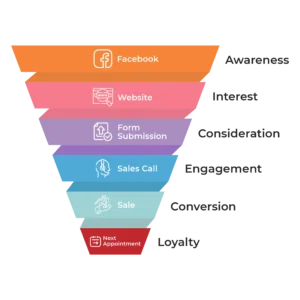As an expert web designer, I can tell you that the design of your website is one of the most important factors in determining your online success. In fact, your website is often the first impression potential customers will have of your business. If your site is difficult to navigate, slow to load, or doesn’t look professional, you could lose their trust before they even have a chance to learn about your services or products.
A well-designed website, on the other hand, creates a positive experience for your visitors. It helps them find what they need quickly and easily, builds trust in your brand, and encourages them to stay longer. Good design also plays a key role in improving your search engine ranking, driving traffic to your site, and ultimately converting visitors into customers.
In this article, I’ll Walk you through why website design matters so much and how it can affect everything from user experience to your business’s bottom line. Whether you’re building a new site or refreshing your current one, understanding the importance of design will help you create a site that supports your business goals and leaves a lasting impression.
What is Website Design
Website design is the process of planning, creating, and organizing the elements that make up a website. It involves a combination of graphic design, user interface (UI) design, and user experience (UX) design, all working together to create a visually appealing, functional, and easy-to-navigate website. The goal of website design is to ensure that visitors have a positive experience while browsing the site and that they can easily find the information or services they need.
Key elements of website design include:
- Layout: How the content is structured and arranged on the page, ensuring it is visually appealing and easy to follow.
- Color Scheme: The choice of colors that represent the brand and create a visually harmonious experience for users.
- Typography: The selection of fonts that make the content readable and align with the site’s tone and branding.
- Images and Graphics: The use of photos, icons, illustrations, and other visuals to enhance the content and make the site more engaging.
- Navigation: The menus, buttons, and links that allow users to easily find their way around the website.
- Responsiveness: Ensuring that the website is mobile-friendly and looks good on all devices, from desktops to smartphones.
- Performance and Speed: Designing a site that loads quickly and performs efficiently, contributing to a better user experience.
- SEO: Integrating design elements that help search engines index and rank the site higher, such as clean coding and optimized images.
- Accessibility: Ensuring that your website is accessible for everyone is important, everything from image alt text to description for a table.
Ultimately, good website design combines aesthetic appeal with functionality, ensuring that visitors can easily interact with the site and accomplish their goals, whether that’s making a purchase, contacting the business, or simply exploring the content.
What is the Difference Between Website Design and Website Development?
When creating a website, two key roles come into play: website design and website development. While these two processes are deeply interconnected, they focus on different aspects of a website’s creation. Website design is all about the visual elements and user experience, ensuring that the website is appealing, easy to navigate, and aligned with the brand. Website development, on the other hand, focuses on the technical side, turning the design into a fully functional website by writing code and integrating features.
Understanding the difference between these two areas can help you better appreciate the complex process of building a website and how each part contributes to its overall success. Below is a breakdown of the key differences between website design and development.
| Aspect | Website Design | Website Development |
| Focus | Visual appearance and user experience. | Functionality, performance, and technical implementation. |
| Key Responsibilities | Creating the layout, color scheme, typography, and visuals. | Coding the website, integrating features, and optimizing performance. |
| Primary Goal | Make the website look appealing and easy to use. | Make the website work smoothly, ensuring functionality and interactivity. |
| Skills Required | Graphic design, UI/UX design, branding, color theory. | HTML, CSS, JavaScript, PHP, back-end programming, database management. |
| Tools Used | Adobe Photoshop, Sketch, Figma, Adobe XD, InVision. | Code editors, Git, databases, CMS platforms, server-side programming languages. |
| Output | Design mockups, prototypes, wireframes. | A working, functional website with all features implemented. |
| User Interaction | Focuses on how users experience the website visually and interactively. | Focuses on how the website operates, including load times, responsiveness, and features. |
| Examples | Color schemes, layout structure, navigation menus, icons. | Database setup, website security, server configurations. |
Both website design and website development are essential for creating a successful online presence. A great website needs to look visually appealing (design) and work flawlessly (development). Together, they form the backbone of any effective website.
Why Web Design Is Important
Web design is more than just creating a visually appealing website; it’s about building an experience that captures the attention of users, keeps them engaged, and drives them toward specific actions. In the digital era, your website often serves as the face of your business, making its design a crucial factor in your overall success.
First Impressions Matter
In the digital world, your website is often the first interaction potential customers have with your business. Within seconds of landing on your site, visitors form an opinion about your brand, and that opinion is heavily influenced by your website’s design. A clean, modern, and professional design creates a positive first impression, making visitors more likely to trust your business and engage with your content.
On the other hand, a poorly designed, outdated, or cluttered website can quickly turn visitors away. It gives the impression that your business may lack professionalism, attention to detail, or credibility. With so many options available online, users won’t hesitate to leave a site that doesn’t immediately meet their expectations.
A strong first impression sets the tone for a visitor’s entire experience on your site. By investing in quality web design, you show users that you value their time and are committed to providing a professional and trustworthy experience.
Builds Credibility and Trust
Your website serves as the digital face of your business, and its design plays a critical role in building credibility and trust with your audience. A professional, well-designed website signals that your business is reliable, detail-oriented, and committed to providing a high-quality experience.
Visitors are more likely to trust a website that looks polished, is easy to navigate, and presents information clearly. Elements like consistent branding, readable fonts, high-quality images, and clear calls-to-action show that your business is serious and trustworthy. On the flip side, a cluttered, outdated, or poorly designed site can make users question your legitimacy, professionalism, and ability to deliver on promises.
A well-crafted design also reduces user frustration by offering intuitive navigation and quick access to important information. This positive experience fosters confidence in your brand and encourages users to engage further, whether that means exploring your products, filling out a contact form, or making a purchase.
In today’s competitive market, credibility and trust are essential for building lasting relationships with customers, and a thoughtfully designed website lays the foundation for that trust.
Enhances User Experience (UX)
User experience (UX) is at the heart of a successful website, and good web design is key to making sure visitors have a seamless and enjoyable interaction with your site. Enhancing UX means creating a website that is intuitive, easy to navigate, and designed with the user’s needs in mind.
A well-designed website ensures that visitors can quickly find the information they are looking for without confusion or frustration. Elements such as clear navigation menus, logical page layouts, and responsive design all contribute to a positive experience. When users feel comfortable exploring your site, they are more likely to stay longer, interact with your content, and complete desired actions, such as making a purchase or submitting an inquiry.
Boosts Search Engine Optimization (SEO)
Web design plays a crucial role in improving your website’s search engine optimization (SEO), making it easier for potential customers to find you online. A well-designed website ensures that both users and search engines can navigate and understand your site effectively.
Key elements of web design that impact SEO include:
- Mobile-Friendliness: With search engines prioritizing mobile-first indexing, responsive design is essential. A mobile-friendly website adapts seamlessly to different screen sizes, improving rankings and user satisfaction.
- Fast Load Times: Page speed is a critical ranking factor. Websites designed with optimized images, clean code, and efficient layouts load faster, enhancing both user experience and SEO performance.
- Clean Site Structure: A clear, logical site structure makes it easy for search engines to crawl and index your pages. Organized menus, internal linking, and proper use of headings (H1, H2, etc.) help search engines understand the hierarchy of your content.
- Optimized Visuals and Alt Text: High-quality images and videos, when optimized correctly, not only enhance visual appeal but also improve SEO. Adding descriptive alt text to images ensures better accessibility and helps search engines index your media.
- User Engagement Metrics: Good design keeps visitors on your site longer by offering an intuitive and enjoyable experience. Lower bounce rates and higher engagement signal to search engines that your website is relevant and valuable, improving your ranking.
Increases Conversion Rates
Web design plays a critical role in turning visitors into customers by creating a seamless and engaging experience that encourages action. A well-designed website uses clear and strategically placed calls-to-action (CTAs), such as “Buy Now” or “Contact Us,” to guide users toward their next step. Intuitive navigation ensures visitors can easily find the information they need, reducing frustration and keeping them engaged. Mobile optimization is equally important, as a responsive design ensures the site performs well across all devices, maximizing conversions from both desktop and mobile users.
Fast load times are another essential factor, as a slow website can drive users away. A website that loads quickly keeps visitors on the page and increases the likelihood of them completing desired actions. Additionally, trust-building elements, such as testimonials, reviews, trust badges, and secure payment options, help establish credibility and make users more comfortable with your brand. High-quality visuals and modern design elements further enhance the website’s appeal, making it more engaging and professional.
Sets You Apart from Competitors
In today’s crowded digital landscape, standing out is essential, and your website design can be a key differentiator. A unique, visually appealing, and professionally designed website immediately grabs attention and leaves a lasting impression on visitors. It reflects your brand’s personality, values, and professionalism, showcasing what makes your business special.
A well-designed website helps you rise above competitors with outdated, cluttered, or generic designs. Elements like custom graphics, consistent branding, and engaging content make your website memorable and reinforce your business identity. Additionally, a modern design signals innovation and forward-thinking, positioning your brand as a leader in your industry.
By providing a seamless user experience, clear navigation, and responsive design, your website not only attracts users but keeps them coming back. This competitive edge fosters trust and loyalty among your audience, making your business their first choice. In essence, a strong web design is a powerful tool that sets your brand apart and leaves your competition in the rearview.
The Impact of Poor Web Design
Your website is often the first thing people see about your business, and poor design can leave a bad impression right away. Imagine visiting a website that’s slow, hard to navigate, or looks outdated. You would probably leave quickly, right? That’s exactly what happens to your visitors when your website design isn’t up to par.
A cluttered layout or confusing navigation can frustrate users and make them question if they can trust your business. If your site doesn’t work well on mobile devices or takes too long to load, visitors are likely to leave and go to a competitor’s site instead. This leads to missed opportunities, fewer sales, and a poor reputation.
Bad design also hurts your visibility. Search engines like Google rank websites lower if they load slowly or aren’t user-friendly. This makes it harder for potential customers to find you online.
A poorly designed website can drive people away, damage your credibility, and even hurt your business growth. On the other hand, investing in good design helps you attract and keep visitors, build trust, and stand out from the competition. It’s the difference between losing customers and winning them over.
Web Accessibility: An Essential Part of Website Design
Web accessibility is a critical component of modern website design, ensuring that people of all abilities can access, navigate, and engage with your site. It involves designing websites to be inclusive for everyone, including individuals with visual, auditory, motor, or cognitive disabilities.
Accessible design means incorporating features like keyboard-friendly navigation, compatibility with screen readers, descriptive alt text for images, and clear, easy-to-read content. These elements not only make your site more usable for individuals with disabilities but also improve the overall user experience for all visitors.
Accessibility is more than just a legal requirement; it’s a reflection of your brand’s values and commitment to inclusivity. Moreover, accessible websites often perform better in search engine rankings and reach a broader audience.
Create an Accessible Website with Us
At The Sun Media House, we prioritize accessibility as a fundamental aspect of web design. Our team ensures your website is inclusive, compliant, and optimized to serve all users effectively. Reach out today to make your website a space where everyone can engage seamlessly.
Final Words
A well-designed website is more than just a digital presence; it’s a powerful tool that helps you connect with your audience, build trust, and stand out from the competition. Whether it’s enhancing user experience, boosting conversions, or improving your brand’s credibility, the design of your website plays a key role in your business’s success. On the other hand, poor design can drive potential customers away and harm your reputation.
If you’re looking to create or improve your website, make sure you partner with experts who understand the importance of good design. The Sun Media House specializes in creating stunning, user-friendly websites that not only look great but also deliver results. Contact us today to start building a website that will make a lasting impression and drive your business forward.



